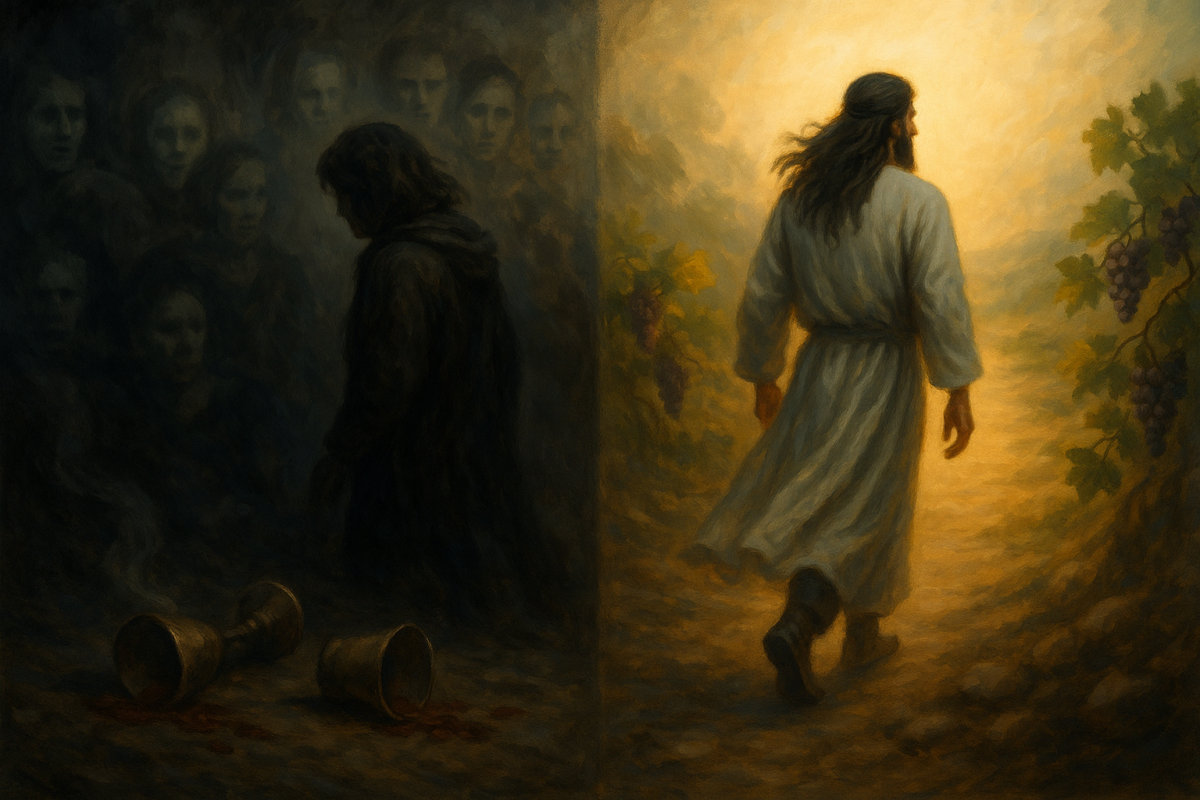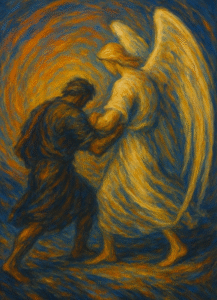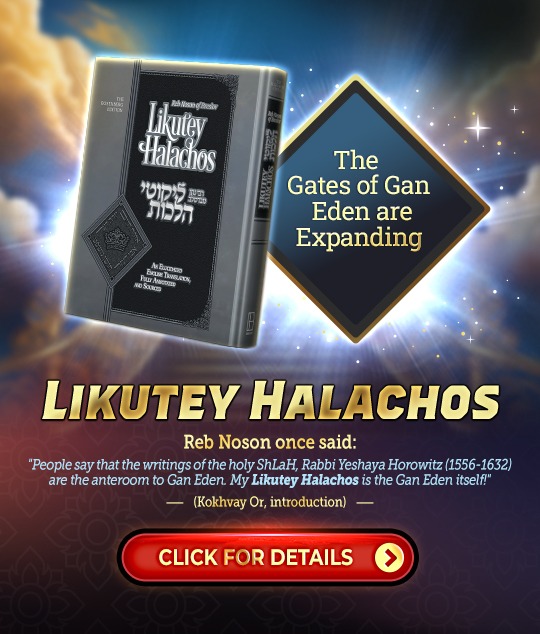- Read ⬦ Redemption ⬦ Shabbat ⬦ Tzaddik ⬦ Weekly Torah Portion
The Keter Access of the Nazir
A New Spiritual Beginning
Parshat Nasso is always read after Shavuot and is understood to mark a spiritual reset. After the ascent of Pesach, Sefirat HaOmer, and Matan Torah, this Parshah begins the journey forward, integrating all we have gained. It is the longest Parshah in the Torah, and it carries within it some of the longest and deepest teachings of the Midrash and Zohar—particularly the Idra Rabbah, a foundational mystical text that opens with the concept of hair, as seen in the laws of the Nazir.
The Waywardness of the Sotah
The Parshah juxtaposes two seemingly unrelated figures: the Sotah, the wayward woman, and the Nazir, the ascetic who refrains from wine. The Sotah is a married woman suspected of adultery. Rashi brings that her sin is rooted in shtut—folly. A ruach shtut, a spirit of irrationality, overtakes her. From a logical standpoint, her actions make no sense. Even if she’s unhappy in her marriage, the path of betrayal leads only to destruction—loss of family, children, and future stability. Yet she acts, not from reason, but from irrational impulse.
Rebbe Nachman’s perspective helps us see deeper: when the soul disconnects from its source, it becomes vulnerable to confusion. The woman who becomes a Sotah has lost her spiritual center. Her betrayal is not only of her husband, but of the entire spiritual structure that holds her life together.
The Nazir’s Response: Spiritual Separation
Immediately following the section of the Sotah, the Torah introduces the Nazir. This is a person who takes a vow to abstain from anything derived from grapes—especially wine—and also refrains from cutting his hair or coming into contact with the dead.
Why the Nazir? Chazal explain that the proximity of these two passages is intentional. The Nazir sees the fall of the Sotah and is moved to create distance from the pleasures and physical indulgences that can lead to such a fall. Wine, which can lead to moral laxity, becomes the focus of abstention. The Nazir’s long hair—normally something cut and refined—is left to grow, symbolizing a spiritual state that transcends conventional boundaries. He also avoids contact with the dead, like a Kohen, elevating his level of purity and spiritual sensitivity.
The Inner Message Behind the Nazir
Rashi asks: Why is the section about the Nazir placed immediately after the story of the Sotah? He answers with a foundational principle: “Whoever sees a Sotah in her disgrace should become a Nazir.” The idea is not to point fingers outward, but inward. If someone is shown the fall of another—a woman who acted out of a ruach shtut (spirit of folly) and destroyed her life—it’s a sign from Heaven that the onlooker, too, must examine himself/herself. The Torah doesn’t say “go fix the world,” it says “start by fixing yourself.”
The Nazir’s path begins with wine, which is associated with losing boundaries and falling into immoral behavior. Wine, when not used in holiness, can lead to lust and envy, particularly toward forbidden relationships. By voluntarily abstaining from wine and undertaking additional restrictions like growing his hair and avoiding impurity, the Nazir redirects his energies inward to strengthen his own connection to Hashem.
A Breslov Lens: What You See Reflects You
Rebbe Nachman develops this idea further. In Likutey Moharan I, Lesson 5, he teaches that when a person sees strife among tzaddikim, it’s not an external reality—it’s a reflection of internal blemishes, especially in the area of personal holiness. The conflict itself is not the issue; the fact that one perceives it is. The spiritual message: “If I’m seeing this, I must be the one with a problem.”
The Tzaddik’s Battle: Self-Purification, Not Confrontation
Reb Noson expands this idea in his explanation of the aggadic tale of Rabbi Yehoshua ben Chananiah and the wise men of Athens (see BRI edition of Likutey Moharan, volume 4, Likutey Halakhot pg. 11). Through a brilliant story of reverse footprints, internal guards, and deception, Reb Noson reveals the same underlying message: perception is not neutral. What you see is shaped by your own spiritual state. If you encounter dysfunction or discord, your response shouldn’t be to analyze or judge—it should be to return inward and repair.
Reb Noson explains that Rabbi Yehoshua ben Chananiah’s act of switching his sandals is deeply symbolic. The sandal represents physicality, lust, and one’s connection to the material world. When Hashem tells Moshe at the burning bush to remove his sandals—“Shal na’alecha me’al raglecha”—the Zohar interprets this as a call to total spiritual purity. The “sandal” represents even permissible physical desires, which Moshe is told to relinquish in order to ascend to Divine closeness.
So too, when Rabbi Yehoshua reverses his sandals, it signifies the tzaddik purifying himself, removing even the faintest trace of material ta’avah. Rebbe Nachman compares this to tanning leather: freshly tanned leather still retains its scent, but over time, with continual refinement, the smell fades entirely. The tzaddik’s “scent” of physical desire disappears completely through ongoing spiritual work.
Thus, Reb Noson explains, when the tzaddik is confronted with spiritual opposition—the guards at the entrance—he does not battle them directly. Instead, he works on himself. He refines his character, intensifies his inner work, and the obstacles fall on their own. This is the true battle of the tzaddik: refinement, not resistance.
This lens reframes the story of the Sotah and Nazir completely. The fall of another is not for spectacle or judgment—it’s a Divine message calling each of us to rise.
Following the advice of tzaddikim doesn’t just shield from spiritual chaos—it actively transforms it! In this merit, we can hope to rebuild the Third Temple speedily in our days.
Seeing Evil Is a Call to Elevate
Returning to Rashi’s explanation of the Nazir, the same principle applies. Why does the Torah juxtapose the Nazir with the Sotah? Because if someone sees the fall of another—a case of immorality, folly, irrational behavior—it’s not simply “bad luck.” It’s a spiritual message from Hashem: “You need to grow.” If you see a problem in the world, the Torah doesn’t tell you to go fix it—it tells you to fix yourself.
In today’s world, we often see things that are deeply irrational and immoral, defended as if they are noble and true. The Torah’s guidance is not to fight windmills, argue with folly, or waste energy debating the indefensible. Rebbe Nachman teaches in his final lesson, Likutey Moharan II 8, that rebuke is a holy tool—but only in the hands of one truly worthy. Most people, when they try to rebuke others, do more harm than good.
So what should we do? Become the kind of person who can uplift others. And until then—refine ourselves. Just as the Nazir abstains from wine to avoid the downward spiral, so too must we avoid the folly around us by elevating ourselves, not arguing with the darkness.
Reaching for the Keter: The Role of the Nazir and the Neder
The Torah’s language in the Nazir section is deeply rich and symbolic. The verse says, “ki yafli lindor neder nazir”—each word carrying profound mystical meaning.
Rebbe Nachman and Reb Noson teach that pele (from yafli) refers to the Keter, the highest spiritual level, which stands as the crown beyond intellect and understanding. When a person is confronted with spiritual chaos and irrationality—like witnessing the fall of the Sotah—his only recourse is to rise above reason. That’s where the neder, the vow, comes in. By making a vow, a person willingly restricts himself in a way that the Torah doesn’t demand—thereby creating a new level of Torah for himself. This self-imposed restriction activates a connection to the 50th gate, the nun, which symbolizes the Keter.
Rebbe Nachman and Reb Noson explain that this connection allows access to the Pele – The Or Ein Sof, the Infinite Light. Ordinary Torah learning and mitzvah observance may not be enough to battle the spirit of folly. But when a person voluntarily elevates himself through a neder, especially if the vow is kept immediately—such as donating charity while declaring it a vow (see Likutey Moharan lesson 57)—he connects to a higher realm that allows him to face and nullify that irrationality.
Nazir and Nezer: Separation and Elevation
The Nazir separates from wine, impurity, and even hair-cutting. The separation isn’t a retreat but an elevation. The root of Nazir is nezer, which also means a crown. A crown rests above the head of a king, symbolizing something that is beyond intellect and above the individual’s current level.
The Nazir embraces this crown of separation to reach the Keter. He refrains from wine because, as Rashi explains, wine brings to immorality when not consumed in holiness. He avoids impurity, even for close relatives, because his goal is purity at the highest level. The Torah says, “ki nezer Elokav al rosho”—the nezer of his God is upon his head. He wears the crown of holiness.
The transformation is astounding. Normally, hair is considered a vessel for dinim, harsh judgment, in Kabbalistic teachings, which is why hair should be kept short. But in the case of the Nazir, his growing hair—normally associated with constriction—is transformed into compassion. At the end of his vow period, the Nazir shaves his hair and it is burned as fuel under the korban he offers—his hair becomes part of the service of Hashem.
This is a total reversal. Just as the Sotah descends into folly, irrationality, and shamelessness, the Nazir ascends by embracing restraint, humility, and holiness. Their directions are opposite. The Sotah is immersed in disgrace; the Nazir transforms judgment into mercy.
Shimshon, the Nazir, and the Battle Against Boundarylessness
To counter the descent into irrationality and folly, the Torah provides a radical spiritual tool: transformation. The Nazir’s hair, normally a vessel for dinim, harsh judgment, is grown out, then sacrificed. The very symbol of constriction becomes a conduit of mercy. This reversal teaches us that extremes of spiritual impurity can only be met with extremes of holiness.
This helps us understand Shimshon HaGibor. Shimshon was a Nazir from birth, designated by Divine decree to live a life of separation and extreme holiness. It was precisely this lifestyle—no wine, no contact with death, never cutting his hair—that enabled him to subdue the Plishtim, a nation representing the klipah of mefulash, boundarylessness. Reb Noson explains that Plishtim (from the word mefulash) symbolize a worldview of total openness, no moral or spiritual constraints—chaotic extremism in any direction.
You can’t argue with such a force. You can’t debate it. There’s no logic to fight. What worked was Shimshon’s embodiment of the Keter, activated through his Nazir status. In his death, he subdued more of the enemy than during his life—showing that it’s not rational effort but spiritual alignment with the highest light that brings about redemption.
The Path Forward: Accessing the Keter Today
Today, we don’t have actual Nezirim. We don’t have the Beit HaMikdash procedures for Sotah or Nazir. But we do have the same spiritual battle. We see irrationality rampant in society. Secular responses—fighting, rallying—fall short. Even standard religious responses—extended effort in Torah study, Shemirat HaLashon etc.—while important, are not always enough.
What we need now is the Keter. Accessing the 50th level, the pele, the infinite light that transcends logic. This is only possible through the tzaddikim who reveal practical advice for our generation. Their guidance gives us a way to connect to the Keter even in the absence of Temple rituals.
By following the advice of these tzaddikim, we don’t just shield ourselves from spiritual chaos—we actively transform it, flipping the battle through elevation rather than confrontation. In this merit, we can hope not only to withstand the confusion of our times, but to rebuild, to return to Yerushalayim, and to see the Third Temple speedily in our days.
Shabbat Shalom!
Meir Elkabas
- 0 comment






















